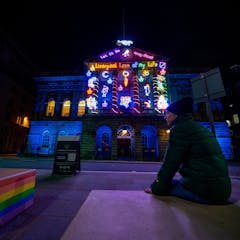
Articles on UK theatre
Displaying 1 - 20 of 27 articles

Youth theatre encourages actors to connect with characters of canonical plays, but the trajectories of young women within them can make it hard to find redemptive or empowering touch points.

Written by comedian Harry Hill, it’s a hectic hour-and-a-half of high-energy songs and skits.

This adaptation is set in Bengal in 1899, where rumours that the British Empire’s plans for partition have spread.

With 3,031 registered shows at this year’s fringe, a concise survey would be impossible. But these are my picks of the best political shows on offer.

New research shows the region’s arts organisations were a critical source of support for vulnerable people during lockdown

A collaboration between Polyglot Theatre and the UK’s Oily Cart puts an inclusive, child-led approach at its heart.

Theatre was one of the worst-hit industries during the height of the pandemic, but the need to adapt may have set an exciting groundwork for the future.

Theatre companies who experimented with outside performances during the pandemic should not abandon them.

How 19th-century audiences could experience the sound of live theatre in their living rooms.

The government has announced a ‘rescue package’ for the arts sector. But it must make sure that the funds are allocated fairly.

The theatre industry is facing an existential crisis and government action is urgently needed to ensure its survival.

The performing arts sector will need to change after the pandemic. This new venture is a glimpse of how it might look.

Will a coronavirus lockdown prompt a permanent change in the way we experience live performance?

Miler halted the terms ‘Renaissance Man’ and ‘polymath’ but was one of the most wide-ranging intellects of his era.

Moving on from tiered seats and post-war black box stages, the design of theatres are changing again in response to new societal concerns.

All of Shakespeare’s major male roles were written for Richard Burbage who died in the 1619s.

Joe Orton’s final play, a savage parody of social attitudes to sexual coercion, could have been written for the #MeToo generation.

The multi-award winning musical is as relevant to audiences in the UK as in the US.

Brilliant performances from the two central characters are undermined by a confused production.

R.C. Sherriff’s classic play focused on the officer class, but the recent film adaptation has given working-class soldiers a voice.
